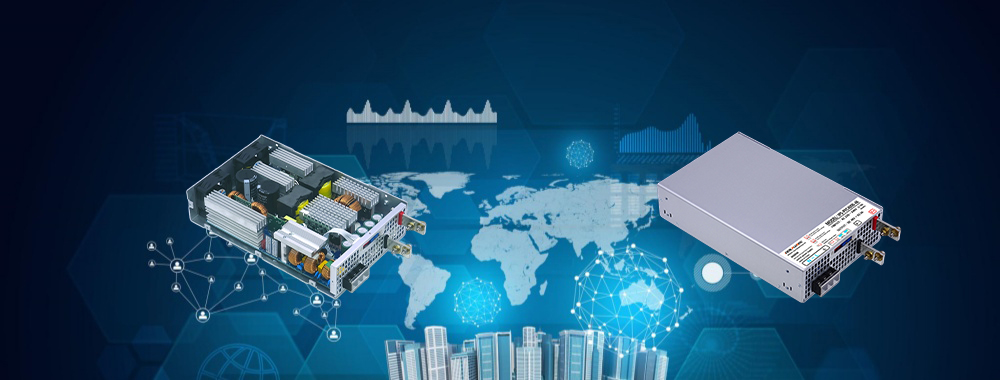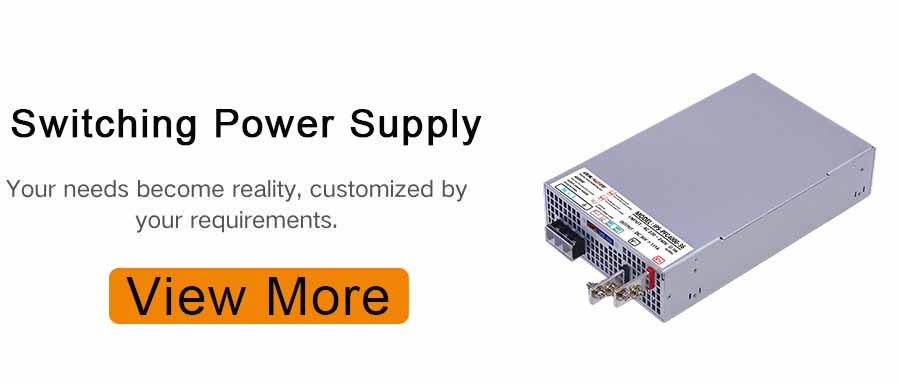A switching power supply utilizes modern power electronics technology to control the on/off time ratio of a switching transistor to maintain a stable output voltage. A switching power supply typically consists of a pulse-width modulation (PWM) control IC and a MOSFET. With the development and innovation of power electronics, switching power supply technology is also constantly innovating. Currently, switching power supplies are widely used in nearly all electronic devices due to their compact size, lightweight design, and high efficiency. They are an indispensable power source for the rapidly developing electronic information industry. So, what are the components of a switching power supply? What are its advantages? Let's explore them today.
Advantages of Switching Power Supplies
Voltage and Current Conversion
The input of a switching power supply is typically AC (such as mains) or DC, while the output is typically for devices requiring DC power, such as personal computers. The switching power supply performs voltage and current conversion between the two.
Transistor Low Dissipation
Unlike linear power supplies, the switching transistors used in switching power supplies typically switch between a fully-on mode (saturation region) and a fully-off mode (cutoff region). Both modes have low dissipation characteristics. While the switching between these modes has higher dissipation, the duration is very short, resulting in greater energy conservation and less waste heat generation. Ideally, a switching power supply consumes no energy itself. Voltage regulation is achieved by adjusting the on and off times of the transistors. In contrast, in a linear power supply, the transistors operate in the amplification region during the process of generating the output voltage, which also consumes energy.
High Conversion Efficiency
High conversion efficiency is a major advantage of switching power supplies. Furthermore, because switching power supplies operate at a high frequency, they can use small, lightweight transformers. Consequently, switching power supplies are smaller and lighter than linear power supplies.
Small Size and Weight
If high efficiency, size, and weight are key considerations, switching power supplies are preferred over linear power supplies. However, switching power supplies are more complex, as their internal transistors frequently switch. If this switching current is not properly managed, it can generate noise and electromagnetic interference that can affect other equipment. Furthermore, if a switching power supply is not specifically designed, its power factor may be poor.
Components of a Switching Power Supply
A switching power supply generally consists of four major parts: the main circuit, the control circuit, the detection circuit, and the auxiliary power supply.
1. Main Circuit
Inrush current limiting: This limits the inrush current on the input side at the moment the power is turned on.
Input filter: Its function is to filter out grid noise and prevent noise generated by the unit from being fed back into the grid.
Rectification and filtering: Directly rectifies the grid's AC power into smoother DC.
Inversion: Converts rectified DC power into high-frequency AC power. This is the core component of a high-frequency switching power supply.
Output rectification and filtering: Provides stable and reliable DC power according to load requirements.
2. Control circuit: On the one hand, it samples the output, compares it with the set value, and then controls the inverter to adjust its pulse width or frequency to stabilize the output. On the other hand, based on the data provided by the test circuit and verified by the protection circuit, the control circuit implements various protection measures for the power supply.
3. Detection circuit: Provides various operating parameters and instrument data for the protection circuit.
4. Auxiliary power supply: Enables software (remote) startup of the power supply and provides power to the protection circuit and control circuit (such as PWM chips).
This is an introduction to the advantages and components of switching power supplies. I hope it is helpful.
IDEALPLUISNG Power Expert:
We focus on the research and development, sales and services in the fields of DC-DC power modules, AC-DC rectifier modules, DC-AC inverters, AC power supplies, DC power supplies, LED power supplies, chargers, rectifier systems, etc., providing personalized, efficient, reliable and cost-effective power solutions for all walks of life.
Thank you for considering our services.







